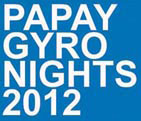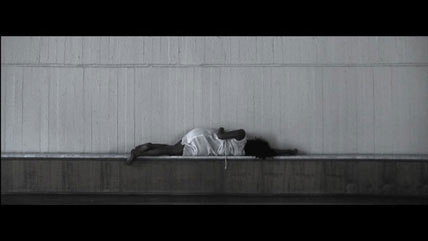| * |
| 16MM: |
| Patrick Bokanowski |
| FEATURE FILM: |
| Bertrand Mandico |
| Yulene Olaizola |
| FESTIVAL EXCHANGE: |
| NOVA |
| VIDEO THEATRE: |
| Filippos Tsitsopoulos |
| Olivier de Sagazan |
| S FILM & VIDEO ART: |
| Aunstrup & Hafslund |
| Alessandro Amaducci |
| Flo Kaufmann + Zimoun |
| Katrin Ottarsdóttir |
| Leyla
Rodriguez & Cristian Straub |
| Makino Takashi |
| Marianna Mørkøre & Rannvá Káradóttir |
| Mie Olise |
| Valentina Ferrandes |
| DOCUMENTRY: |
| André V Larsen |
| Kaspar Astrup Schröder |
| Tom Hovinbøle |
| LAPW RESIDENCIES: |
| Armando Seijo |
| David Kew |
| Genetic Moo |
| LIVE MUSIC: |
| BIRD RADIO |
| STORYTELLING: |
| Fran Flett Hollinrake |
| Tom Muir |
| ARCHITECTURE: |
| MAD Architects |
| Multiplicities |
| Valerio Olgiati |
| BOOK LAUNCH: |
| Antonio Nodar |
 |
|
|
|
 |
| THE
OYSTER EFFECT HD Video - 2010 - 12'51" |
| In 1959, the anthropologist Ernesto De Martino, accompanied by a team of assistants, travels to Salento, a rural area of South Italy, to document the performative phenomenon of Tarantism. According to popular belief, this nervous disorder, provoked by the bite of a poisonous spider called Tarantula, manifests itself through convulsions, paralysis, speaking difficulties, nausea, and it can only be relieved and eventually cured through frantic dancing induced by a particular fast paced music called Tarantella. The origins of this dubious condition can be traced back to the rites of Bacchanalia, remnants of the Greek culture diffused in Basilicata and Puglia. In the stark transition from paganism to Christianity in the former Greek colonies of South Italy, these mystic festivals, attended in majority by women, were banned and Tarantism was incorporated within a regulated system of religious festivities. Over the centuries, the limitation of Tarantella to a mass ritual to be practised solely on the 29th June in the town of Galatina, shadowed the complexity of its historical roots and its cathartic role within the socio-economic system of a largely rural society, only to highlight it as an exotic, folk ceremony. |
| Inspired
by Gramsci, psychoanalisis, as well as Sartre’s and Heidegger’s
existentialism, guided by his desire to understand this phenomenon
under the light of historical materialism, and to redefine most scholarship’s
understanding of the theme at the time – for which Tarantism
was a folk tradition, hinted of exoticism and nonetheless to be read
from ethnocentric intellectual positions or through psychoanalysis
- De Martino analysed Tarantism through what he called “The
Crisis of Presence”. As he states in “The Land of Remorse”,
women affected by Tarantism were finding in this rite of exhaustion,
a channel to expel frustrations and angst for a series of inescapable
and severe living conditions. The repressive role of the family in
a patriarchal society, the harshness of peasants’ living conditions
in an unforgiving natural landscape, unwanted arranged marriages,
bereavement, were all psychic motors that led these women to find
temporary relief in the public dramatization of a ritual of possession,
through which they could be re-integrated in their society. De Martino’s discourse on Tarantism became a keystone for the understanding of subaltern classes of south Italy and finally re-introduced the specific southern folklore into a European perspective. For him, individual “madness” was a symptom of a short circuit of relations of power established by the cultural and political elite ruling in South Italy on the oppressed peasants. |
| THE
OYSTER EFFECT Using as a starting point parts of archive footage shot by De Martino’s team during his first research in the area, “The Oyster Effect” develops into a collage of historical references as narrating voices over a visual journey. In the film, the portrayal of women and hysteria is shown as a series of parallels between built environments, architectural spaces, landscape and their narration. The viewer travels through foreign languages and non-descriptive locations, in a journey that challenges linearity and historicism. The attempt to bridge the specific representations of women’s subjectivity as products of their cultural environments, in the north and southern Europe, is persistently negated by the conflicting relation between image and narrating voice. A letter written by Bertha Pappenheimer, the young lady of Jewish origin who became famous under the name of Anna O, and who was diagnosed with hysteria by Breuer and Freud, describes one of the symptoms of her illness, her temporary inability to speak her mother language. The letter is read and played over images of an architectural space that could vaguely be associated with an early 20th century modernist building. While Anna O talks about her condition, the camera subtly moves into the space of a church, and specifically the Church of San Pietro and Paolo, in Galatina, dedicated to the cult of Saint Paul and to the memory of Tarantism. The journey continues will a long shot of a car travelling through a semi-deserted landscape, hit by heavy rain. The lack of information on this rural geographic location clashes against the voice of Le Corbusier lecturing on the necessity of changing the modes of planning for the industrial city, to cope with the needs of a new generation of urban population. While the journey unfolds to reveal clearer geographic coordinates, a field recording of an audio book plays on the radio against excerpts of archive footage from the film troupe that worked with the De Martino, between Basilicata and Puglia. Shots of mentally unstable women in altered states of consciousness being treated through dance in San Paolo’s church in Galatina, are accompanied by a voice over narrating fragments of a love story. |
| CREDITS Scripting, directing, camera, editing: Valentina Ferrandes Performer: Dada Giovins Sound: Justin Sebastian and Valentina Ferrandes Voiceover: Wanda Sebastian, “Lesson d’Architecture”, Le Corbusier Soundtrack: “I Love Women”, Lou Reed, 1982 Archive footage: “La Taranta”, Gianfranco Mingozzi, 1962 “Lungo i percorsi di Ernesto de Martino”, Luigi di Gianni Locations: Chiesa del Buon Pastore di Policoro, Basilicata, Italy Chiesa di San Pietro e Paolo, Galatina, Puglia, Italy Translation: Dennis Scharlau Special Thanks to: Maria Antonietta Giovinazzo, Nusara Main-Garm, Walter Vitale, Vivien Pelletier, Hugo Sterk, Dennis Scharlau, Don Salvatore Valentina Ferrandes 2010 |
| www.valentinaferrandes.com |
 |
| INTRODUCTION |
| PROGRAMME |
| PARTICIPANTS |
| CONTACT |
| BLOG |